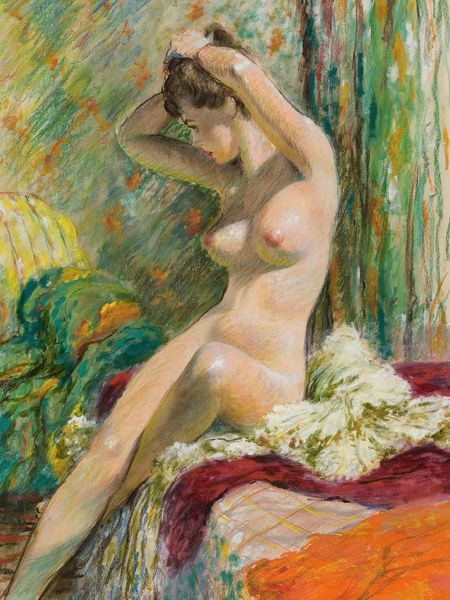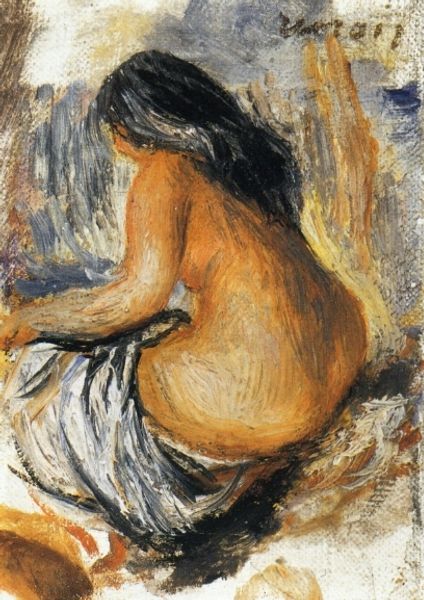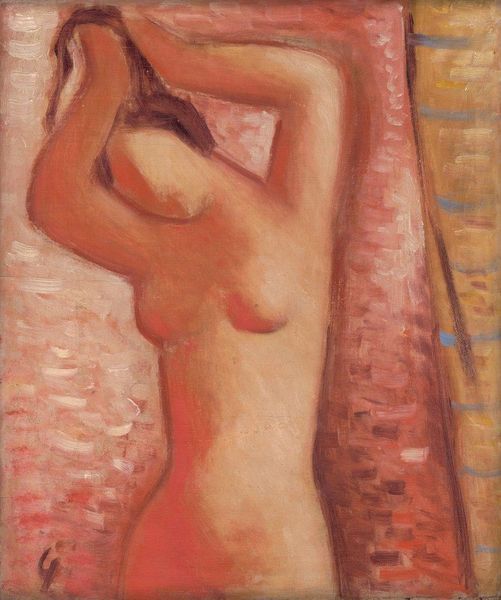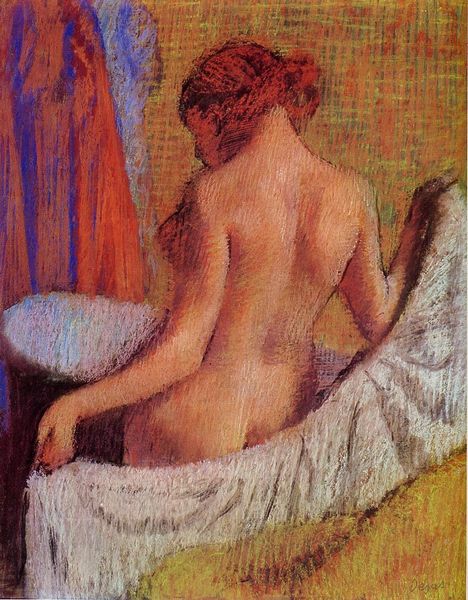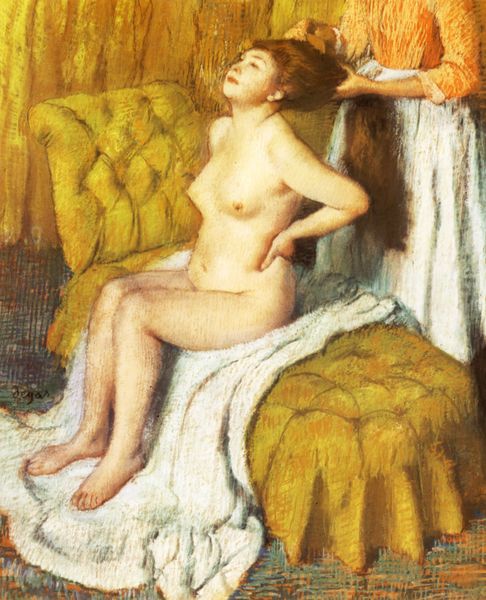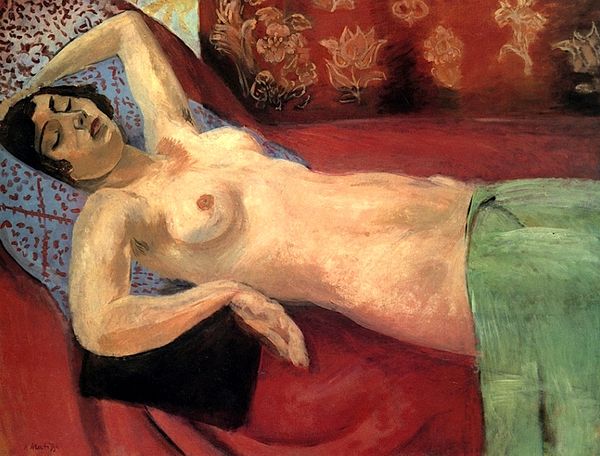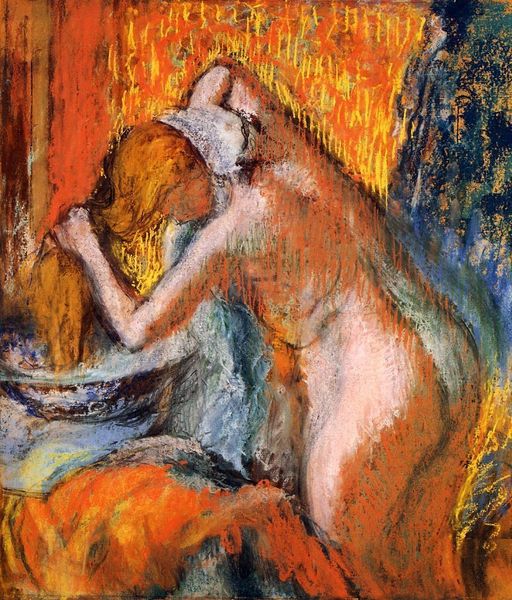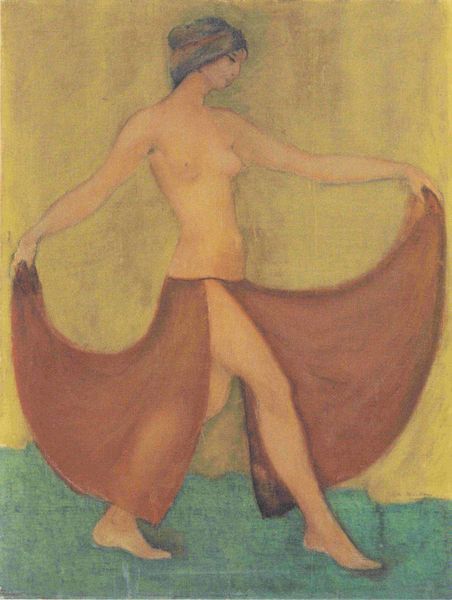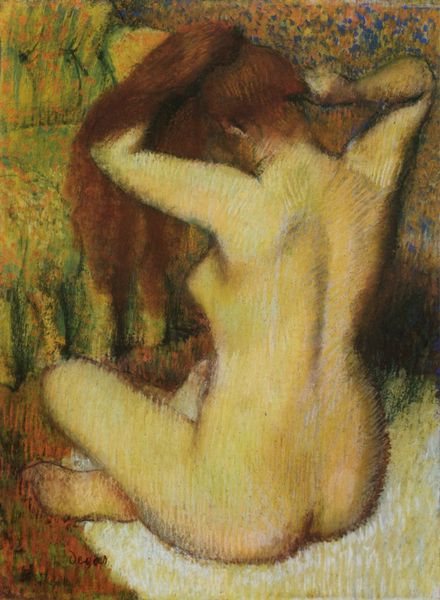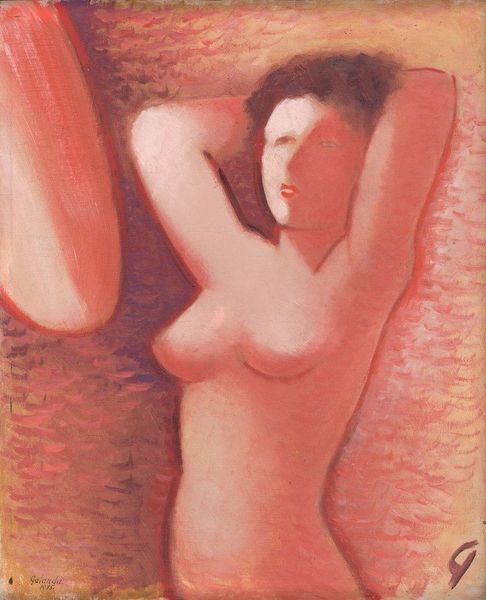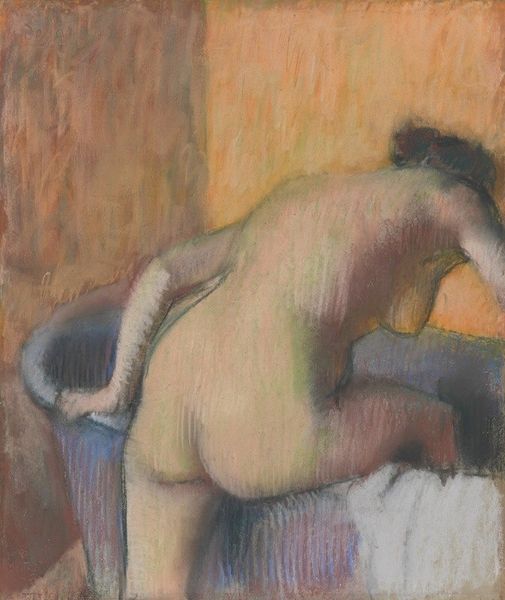
Copyright: Public domain
Editor: We’re looking at Pierre-Auguste Renoir's "Nude in a Chair," painted around 1900 using oil paints. The overwhelming warmth makes me think of a balmy afternoon. What strikes you about it? Curator: Formally, the relationship between the nude and the chair establishes the painting’s tension. Note how Renoir has deployed contrasting textures. The fleshy skin of the bather contrasts with the plush fabric of the chair. Further, there is a tension between the background and the subject. The warm, out-of-focus background melts into the figures and objects in the foreground, highlighting brushwork that deconstructs solid form. Editor: The brushwork you pointed out seems particularly important here. What’s it doing? Curator: The composition verges on abstraction through a radical simplification and unification of the elements via color, tone, and impasto technique. These elements create a powerful sensual and tactile quality, reducing the forms to essential chromatic relations. Do you find any sense of underlying structure despite its seeming softness? Editor: I think so, the angle of her arm mirrors the back of the chair. It’s almost a repeat of forms. That, along with the similar impasto application helps unify the image. Curator: Precisely. Such devices create an image that asks us to consider how its elements fit together into a dynamic, self-contained composition. It’s a painting about painting. Editor: I see it now! The sensuality comes through Renoir's painterly choices as much as from the subject. Curator: Yes. What we’ve explored suggests that there's so much more to discover beyond just the subject matter.
Comments
No comments
Be the first to comment and join the conversation on the ultimate creative platform.
